-
Car Reviews
- All reviews
- Midsize SUVs
- Small cars
- Utes
- Small SUVs
- Large SUVs
- Large cars
- Sports SUVs
- Sports cars
- Vans
Latest reviews
- Car News
-
Car Comparisons
Latest comparisons
- Chasing Deals
BYD’s Sealion 6 plug-in hybrid steeply undercuts rivals with sharp pricing and compelling value, in a major challenge to Toyota and Mitsubishi
When Chinese mega-brand BYD entered the Australian new car market via its local distributor – EV Direct – petrol power wasn’t intended to be part of the mix. Tesla’s enormous success in expanding sales of fully-electric vehicles in Australia meant that the BYD push was to be based on volts alone.
But while the first three BYD cars to come to Australia were indeed only available as full EVs – the Atto 3 small SUV, Dolphin hatchback and Seal sedan – the enduring popularity of hybrids as a practical ‘halfway house’ to going electric saw EV Direct successfully lobby to bring the brand’s Sealion 6 plug-in hybrid midsize SUV to our shores.
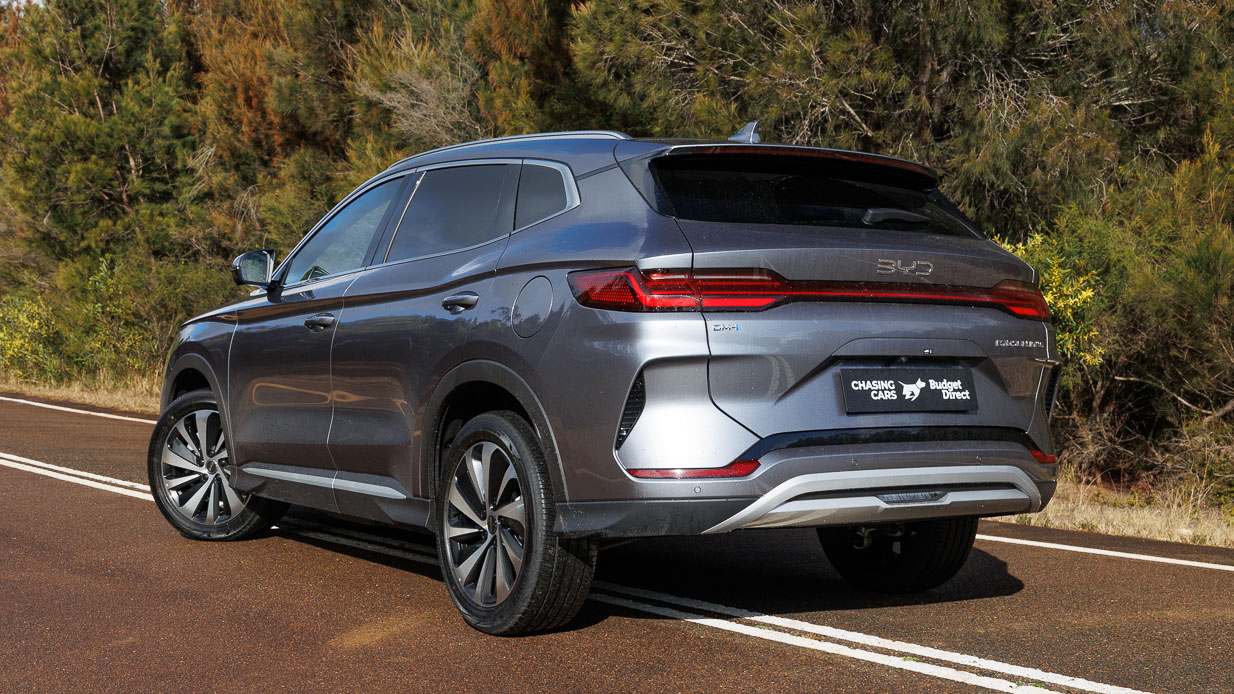
Chasing Cars first drove the Sealion 6 at the ex-General Motors proving ground at Lang Lang, Victoria, in May. In verdict, contributing road tester Dylan Campbell hypothesised that, if priced sharply, the hybrid-powered Chinese SUV would be “good enough to merit consideration” against the dominant petrol-electric SUV in Australia: the Toyota RAV4.
BYD and EV Direct did manage to price the Sealion 6 keenly – very much so. At $48,990 before on-road costs for the Dynamic front-wheel-drive trim, and $52,990 before on-roads for the peppier Premium all-wheel-drive variant, the BYD doesn’t merely undercut the Toyota RAV4 Cruiser hybrid by at least $2420 – the Sealion 6 is generally higher-spec, too.
Each aforementioned hybrid rival hails from better-known, traditionally trusted marques, but all look considerably harder to justify financially than the Sealion 6, which arrives with all guns blazing in the value department: China is well and truly the new Korea in that sense, it would seem.
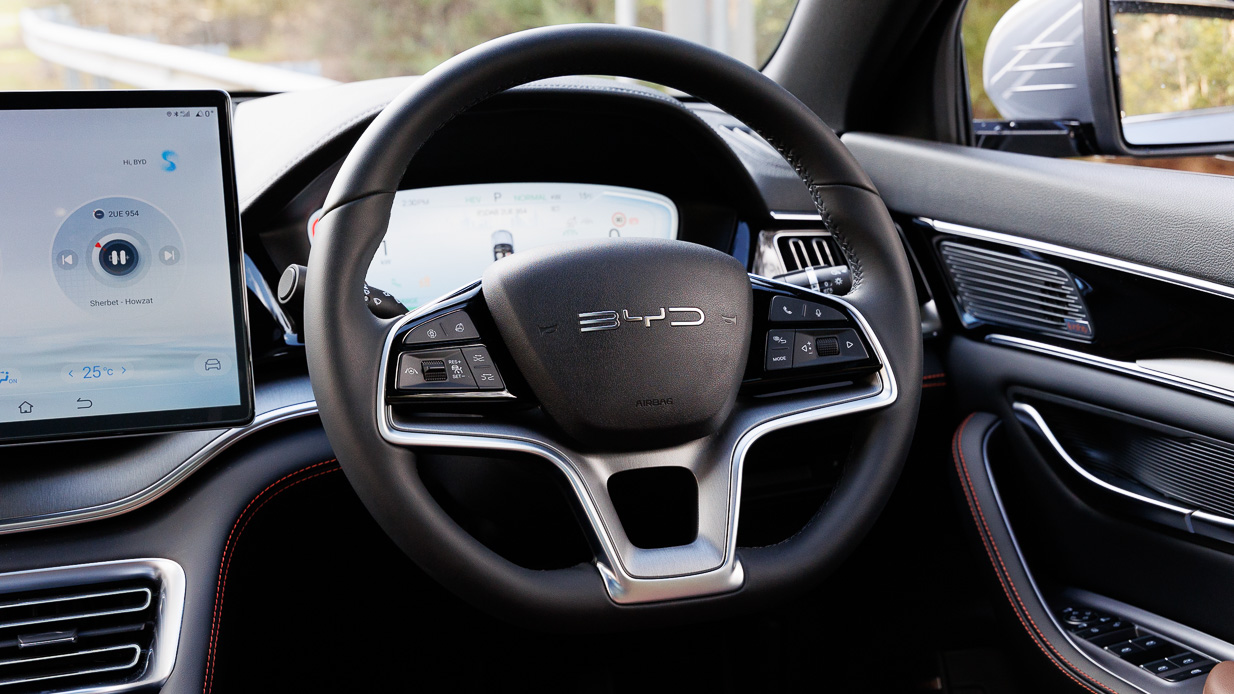
For novated leasing customers, as a plug-in hybrid (rather than a series-parallel hybrid like the milder systems seen in the Toyota RAV4, Honda CR-V, Kia Sportage and Hyundai Tucson hybrid options), the Sealion 6 also attracts significant savings for salary-sacrificers as PHEVs that are purchased before mid-2025 attract no fringe benefit tax for life.
Being a plug-in hybrid, the Sealion 6 can be driven like an EV for a compelling distance – 80km in our real-world test, or more than double the average daily distance driven in Australia. But it’s also surprisingly fuel efficient, even if you don’t bother to charge it up, thanks to remarkably thoughtful hybrid software.
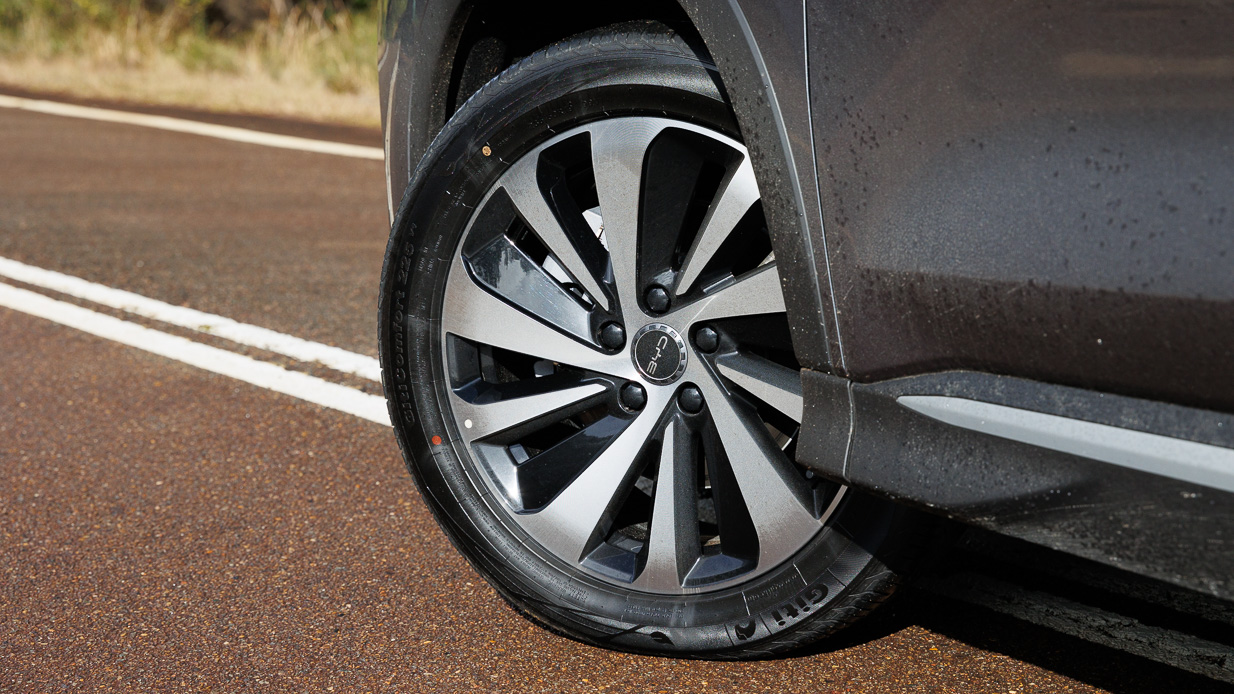
While the signs were gently positive on our first drive of the Sealion 6 in the confines of an artificial proving ground, a week of subjecting the cheapest version of this plug-in hybrid BYD to commuting and road tripping in New South Wales failed to locate many weak spots.
Unknowns such as depreciation rates aside, the Sealion 6 is a convincing, capable family SUV offering tremendous value for those with lifestyles unsuited to fully-electric vehicles.
Make no mistake: BYD has priced the Sealion 6 very aggressively in Australia in a move that will no doubt buy the newcomer some market share in the hotly contested midsize SUV segment – and in particular, the burgeoning set of hybrids within that class.
The degree of value for money currently represented by the Sealion 6 at launch pricing becomes clear when noting that both variants, despite differing in power levels and the fitment of front-wheel drive or all-wheel drive, otherwise have identical (and high) levels of standard features.
It’s fair to say that both the Sealion 6 Dynamic (as we tested, with front-wheel drive) and the Premium with AWD, can compete squarely with top grades of better-known midsize SUVs. And yet the BYD is cheaper than nearly all of them.
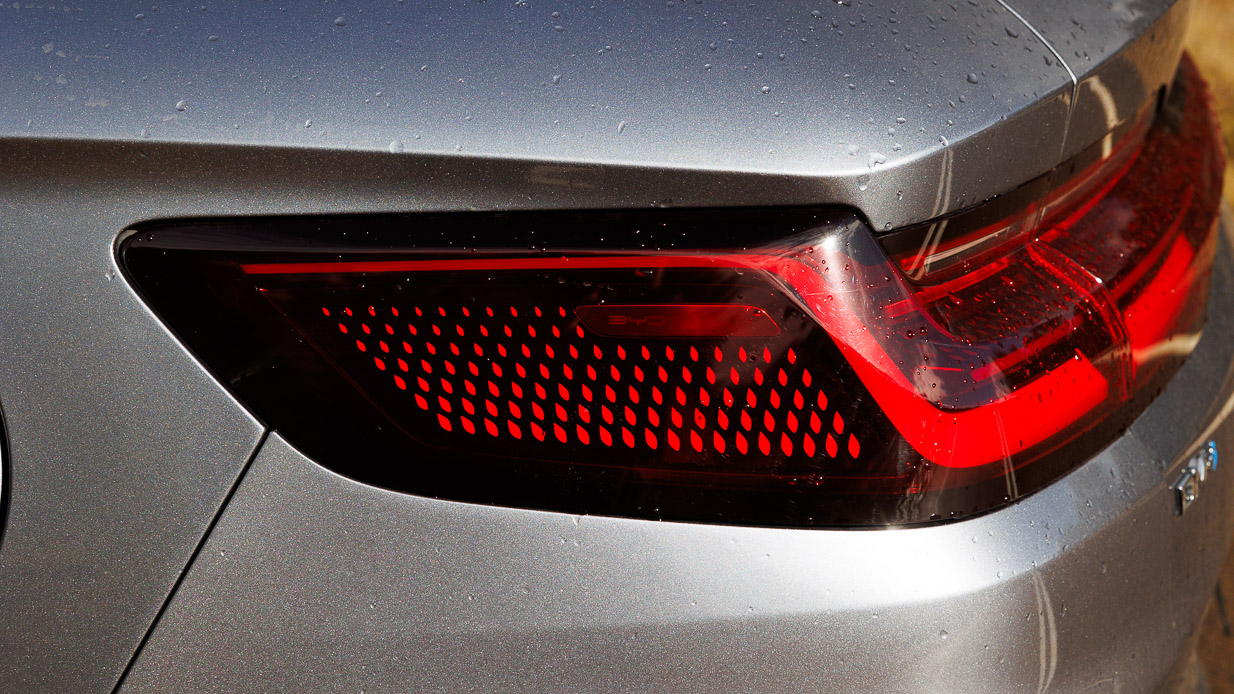
Consider the following list, ranking new hybrid midsize SUVs on sale in Australia from most expensive to least expensive:
The Sealion 6 is miles cheaper than its most similar rival, the AWD-only Mitsubishi Outlander PHEV, which only starts at $57,290 before on-road costs for the rental car-esque ES spec. Meanwhile, the Sealion 6-equivalent Exceed Tourer ($71,790) is a whopping 35 percent dearer than the BYD. That’s quite a headache for the triple-diamond marque.
Competing Toyota, Honda, Kia and Hyundai products are more familiar, but all use a battery that is about 90 percent smaller than the one in the BYD: they’re hybrids but you can’t charge them from the wall or drive them for any meaningful distance without awakening the hybrid system.
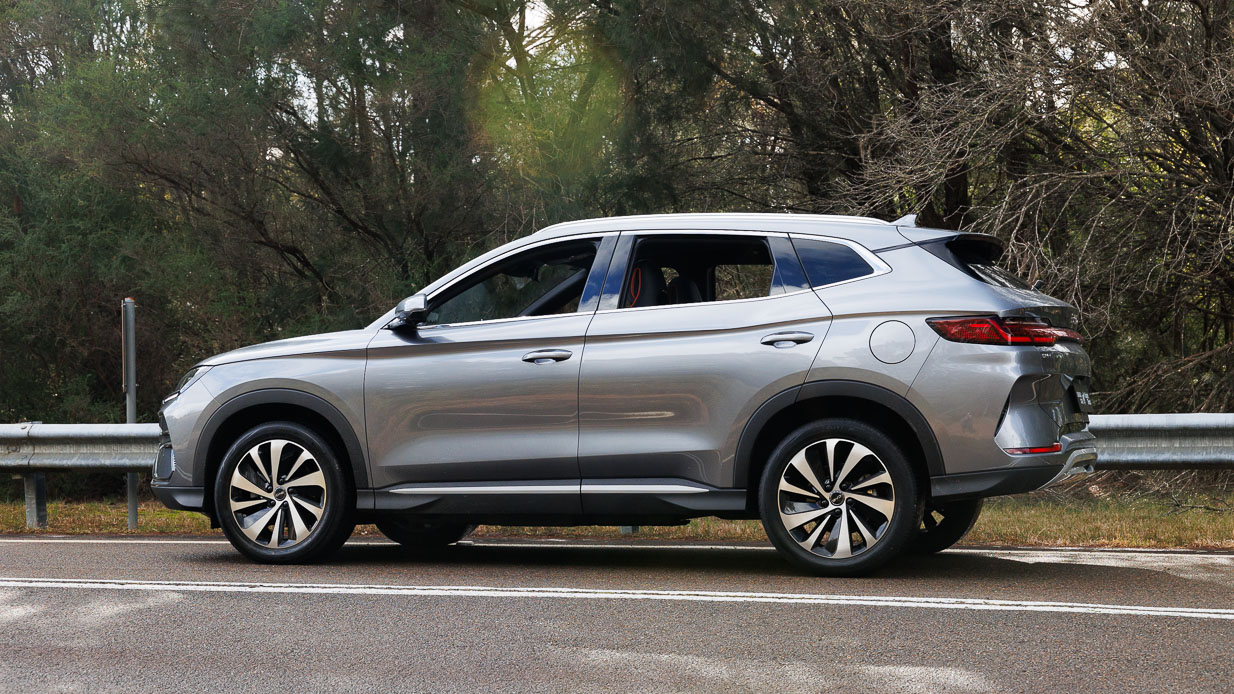
Buyers who could consider going fully-electric might consider, for instance, the Tesla Model Y rear-wheel drive (sharply priced at $55,900 before on-road costs). BYD is also planning to launch a full-EV version of the Sealion 6 in Australia soon.
But compared against other hybrids, it appears that the BYD starts our test with a devastating value advantage, backed by the following standard features:
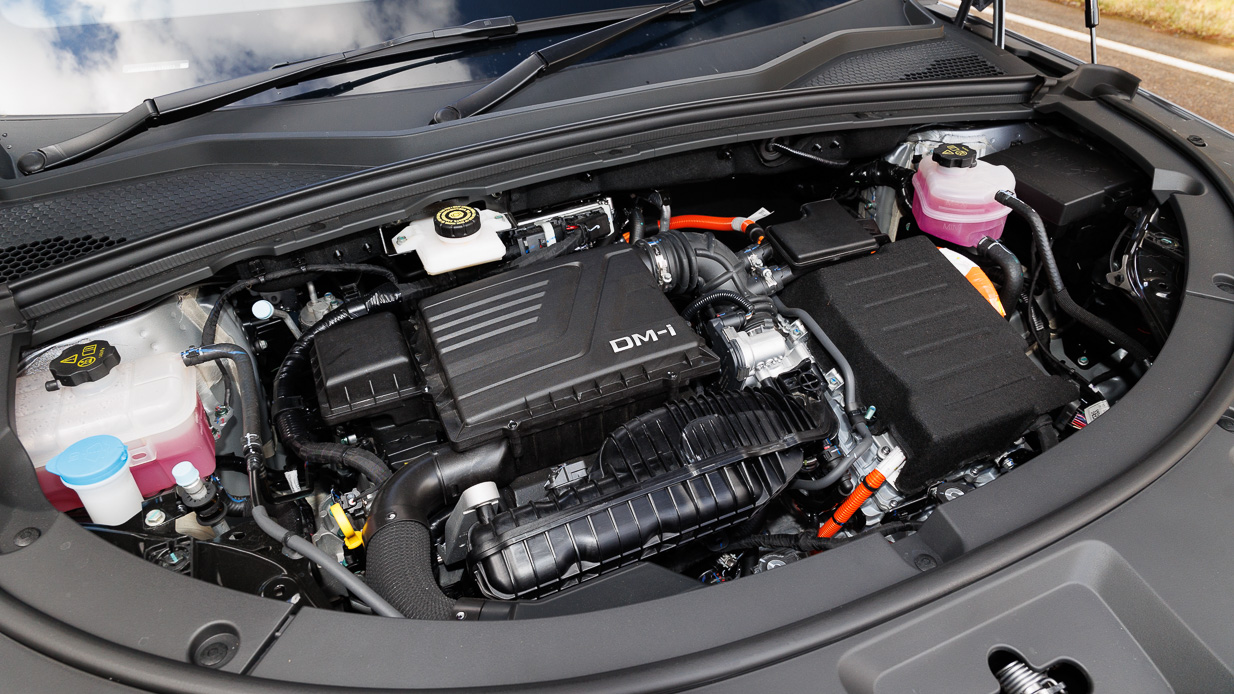
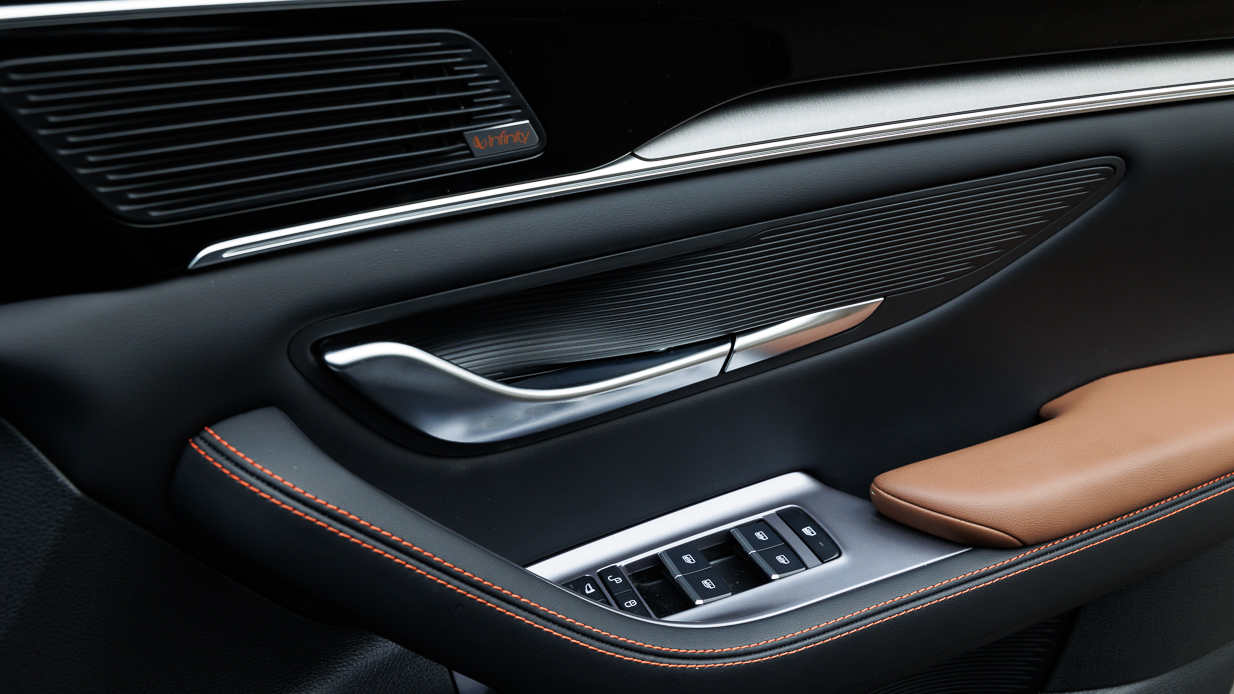
Additional standard equipment relevant to the hybrid system includes:
For an additional $4000, the Sealion 6 Premium model adds:
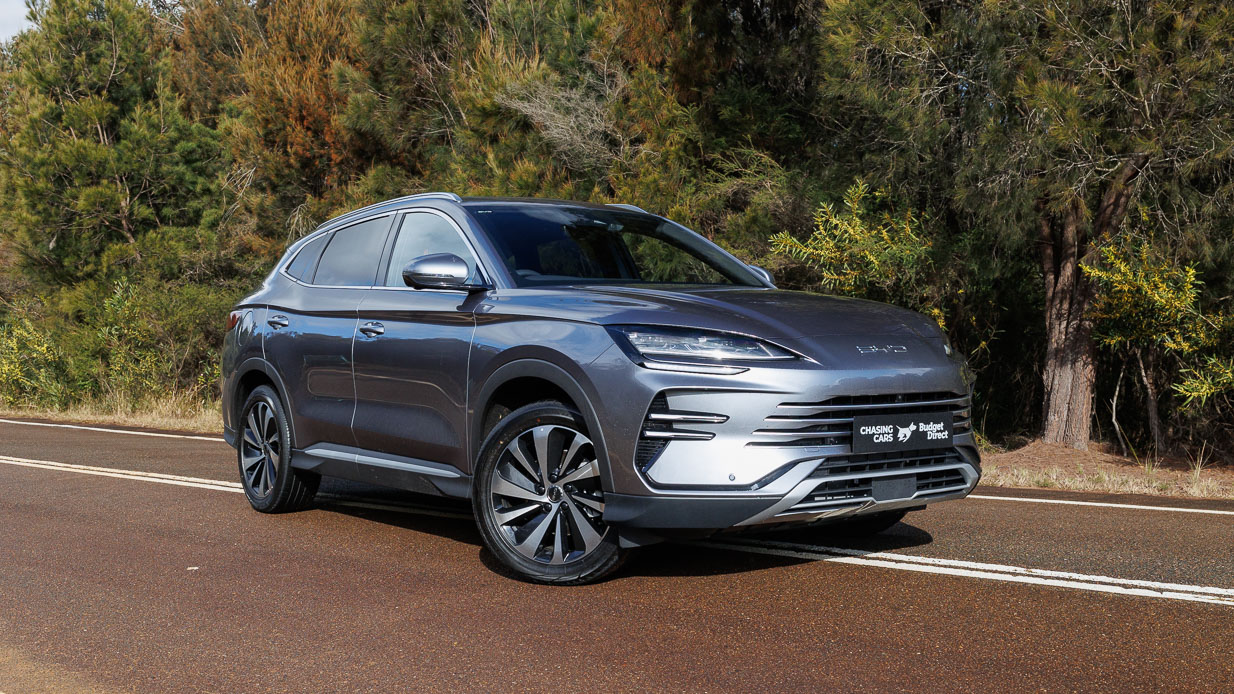
The only cost options relate to exterior colours. Arctic White is included as standard, while Delan Black, Harbour Grey, Stone Grey and Azure Blue all attract a $900 upcharge.
The only interior colour available on the Sealion 6 Dynamic model is a black/tan two-tone vinyl treatment with red piping – we didn’t mind it, but acknowledge it will polarise.
The all-wheel drive Premium model does allow the choice of a navy/light grey option. What you can’t get is the typical all-black interior Australians seem to prefer.
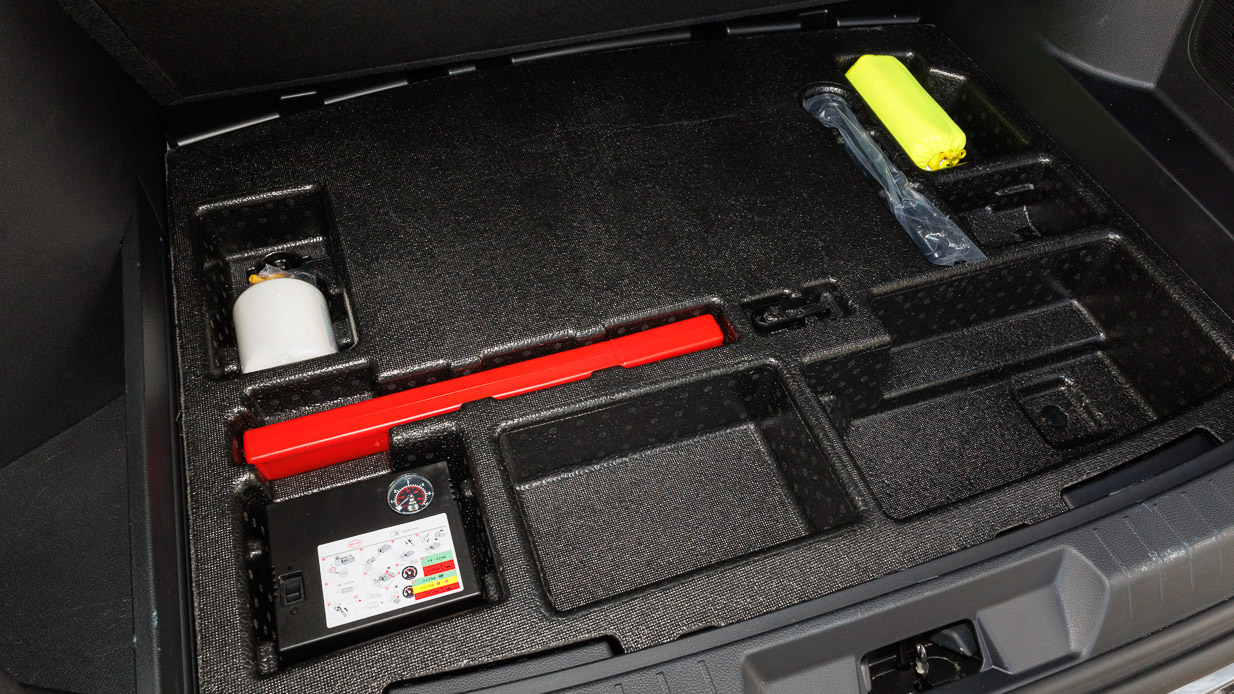
So, what’s missing? Not much. A spare wheel and tyre of any kind is not available – some rivals have at least a space-saver tucked beneath the boot floor.
There’s no ‘sporty’ looking variant available with firmer suspension or better tyres. There is no lumbar adjustment for either front seat, nor is genuine leather (or fabric) upholstery available to sub out the vinyl.
As it currently sits, nobody would accuse the BYD Sealion 6 of being a sporty SUV. And, frankly, that’s fine.
This is a cushy, comfy family bus that (just) avoids feeling too soft or boaty on broken-up roads.
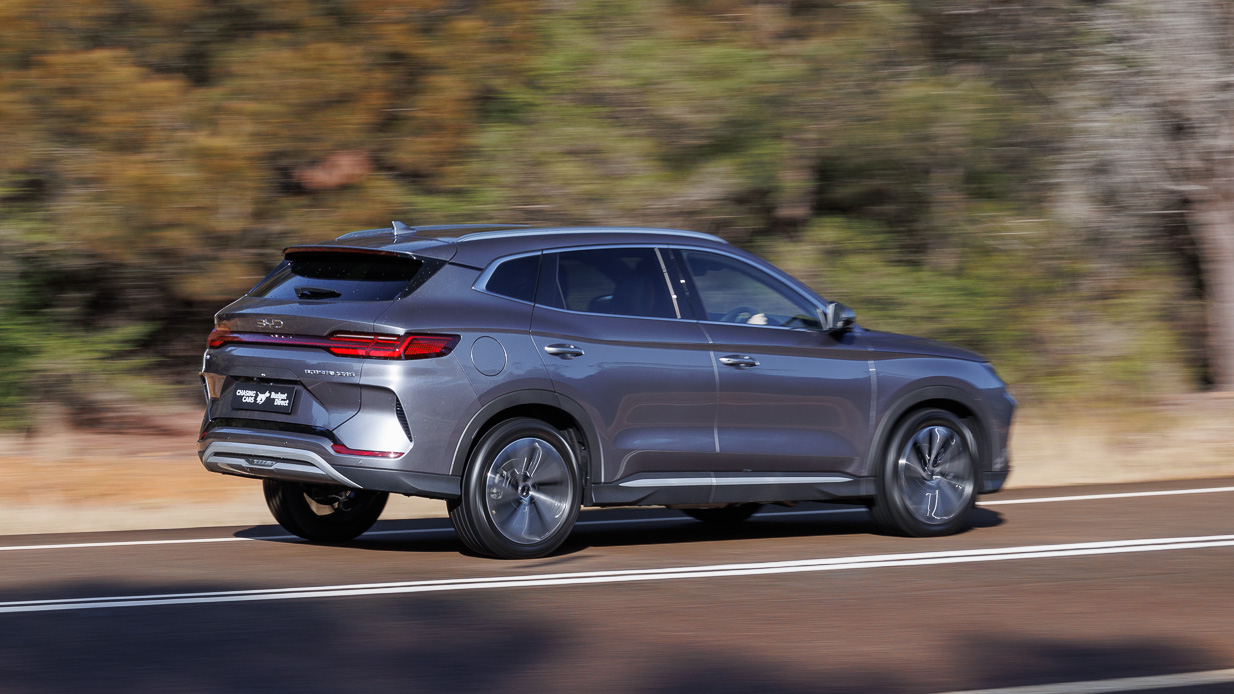
The BYD’s dynamics are capable and basically unremarkable, which for the segment, is totally acceptable. It doesn’t try to be one of the best vehicles to drive in the midsize SUV class, but it avoids causing any kind of real dynamic offence.
That, in itself, shows BYD is quickly learning the preferences of Western buyers. Despite building cars for Chinese domestic consumption since 2005, the Shenzhen-based company only entered the European and Australian markets in 2021 – places where buyers typically prefer cars with disciplined suspension and steering tunes.
BYD’s first Australian-market offerings, the fully-electric Atto 3, Dolphin and Seal, are fairly affordable and cheerful vehicles that are okay to drive, though each continues to be plagued by grainy, digital-feeling steering and hyperactive semi-autonomous safety technology tuning that keep drivers held at a distance.
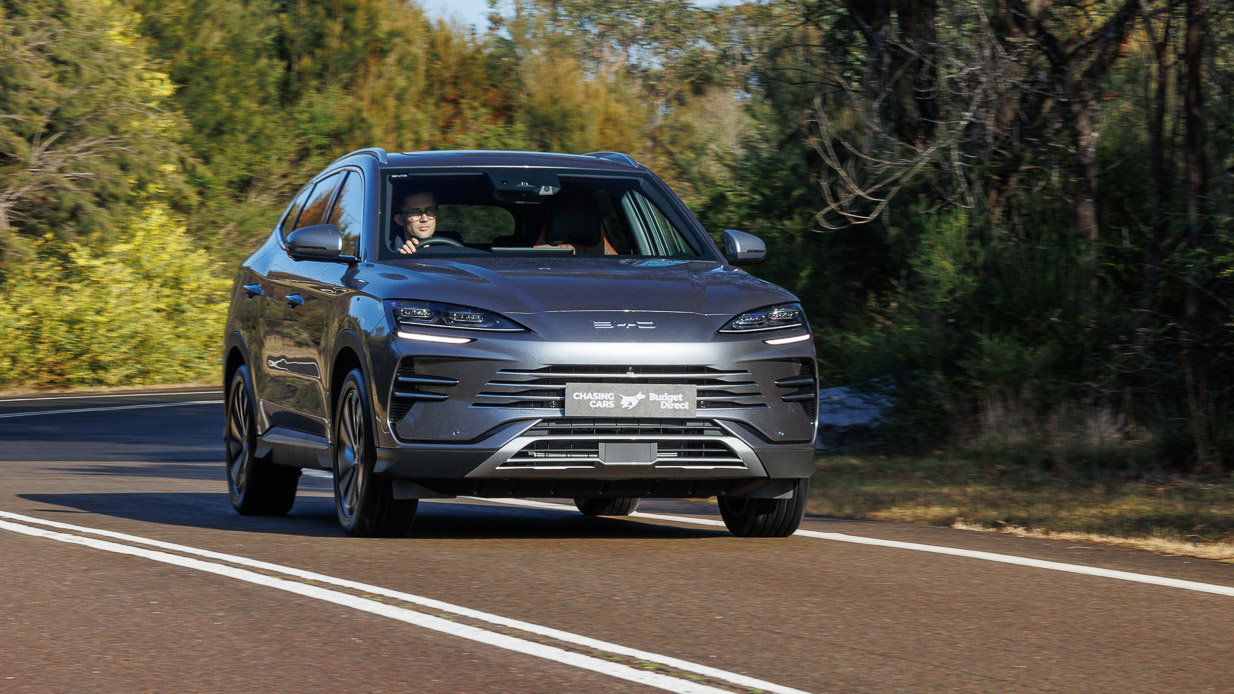
We’re genuinely pleased to share that the Sealion 6 makes inroads on both issues, but in particular, the steering. Now, we’re not saying the hybrid BYD has a precise Porsche-level tiller tune, but the Sealion 6’s mid-weighted and smooth steering rack feels fine, and it shows a considerable uptick in polish. Steering is a key control surface, so this is important.
There’s still a way to go on getting safety tech right, though. BYD would be well served by studying the way brands like BMW and Volkswagen generally release lane-keeping systems that accurately monitor the situation and intervene only when genuinely needed.
The Sealion 6’s lane-centring continues to be overactive but it is, again, improved over the brand’s earlier efforts. We still waded through the touchscreen to deactivate it during most drives.
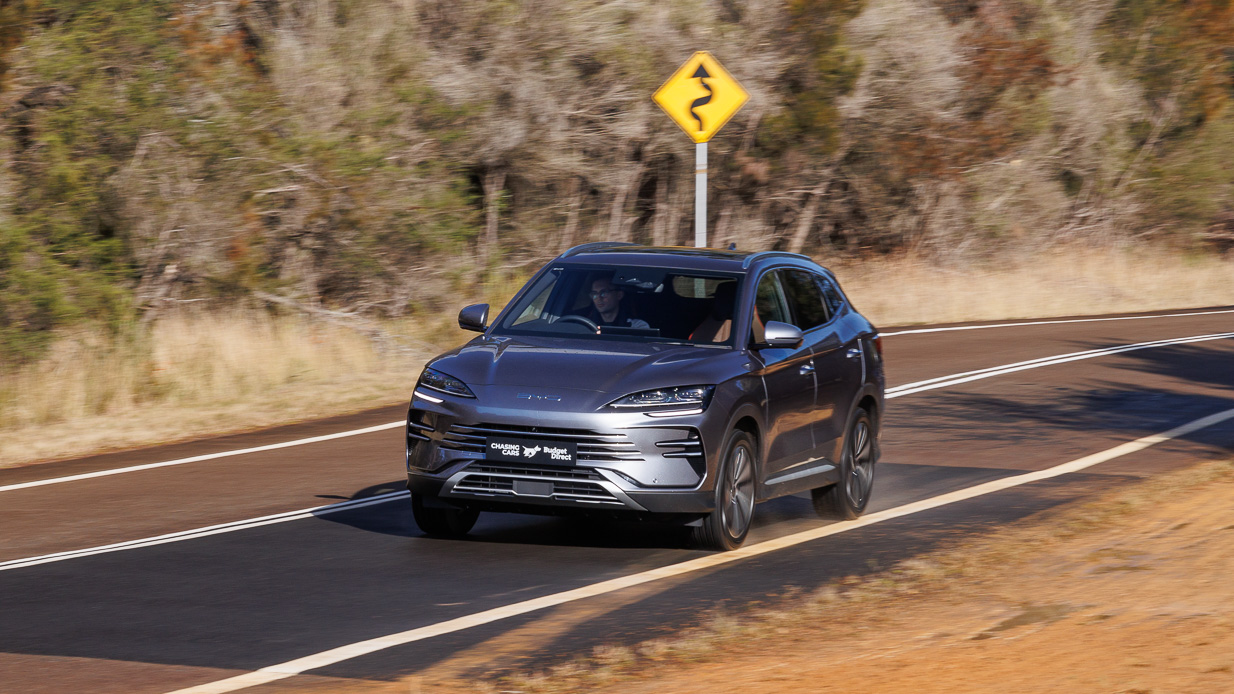
A combination of sensibly-sized 19-inch wheels, decently high-profile (although admittedly not massively grippy) Giti tyres and cushioned damping all make the Sealion 6’s ride quality over Australia’s averagely-surfaced roads impressive. In this sense, the BYD is in league with the Toyota, Honda and Hyundai and possibly even a little better in urban areas.
Where rivals show the Sealion 6 a pair of clean heels is on twisting rural routes where the superior body control and more disciplined suspension of a RAV4 or Sportage give enthusiastic drivers additional confidence – but honestly, that would be a small slice of midsize SUV owners.
For a brand that was previously specialising in all-electric vehicles, which carry an inherent amount of powertrain refinement thanks to the omission of combustion, it’s worth mentioning how surprisingly well-done BYD’s hybrid system is.
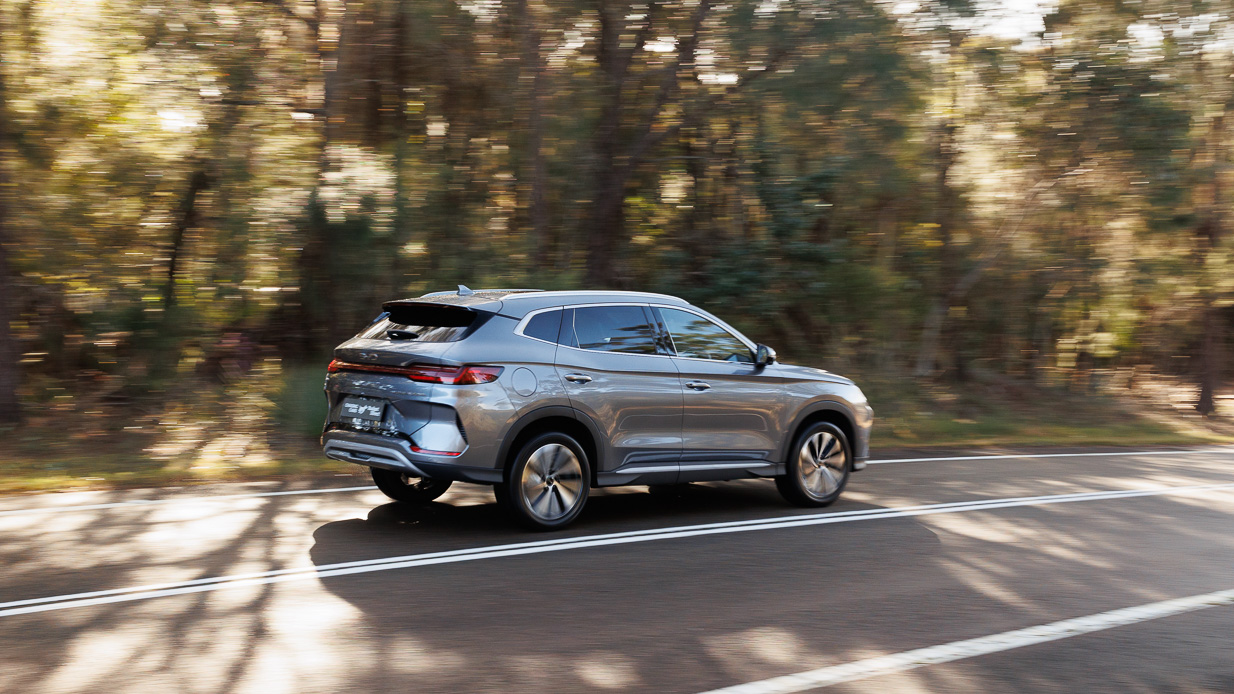
We are especially cynical when it comes to plug-in hybrids because many of them are truly miserable in the way they fail to slickly blend petrol and electric power, but an interesting trick to the Sealion 6’s battery management software helps this SUV out.
The stats of the Sealion 6 Dynamic’s underlying petrol engine appear dire: the non-turbocharged 1.5-litre four-cylinder is quoted to generate just 72kW of power and 122Nm of torque (queasily Kia Picanto-esque outputs…but in an SUV weighing 1940kg!).
In a plug-in hybrid that needed to lean on its engine frequently, such measly numbers would be a b-i-g problem.
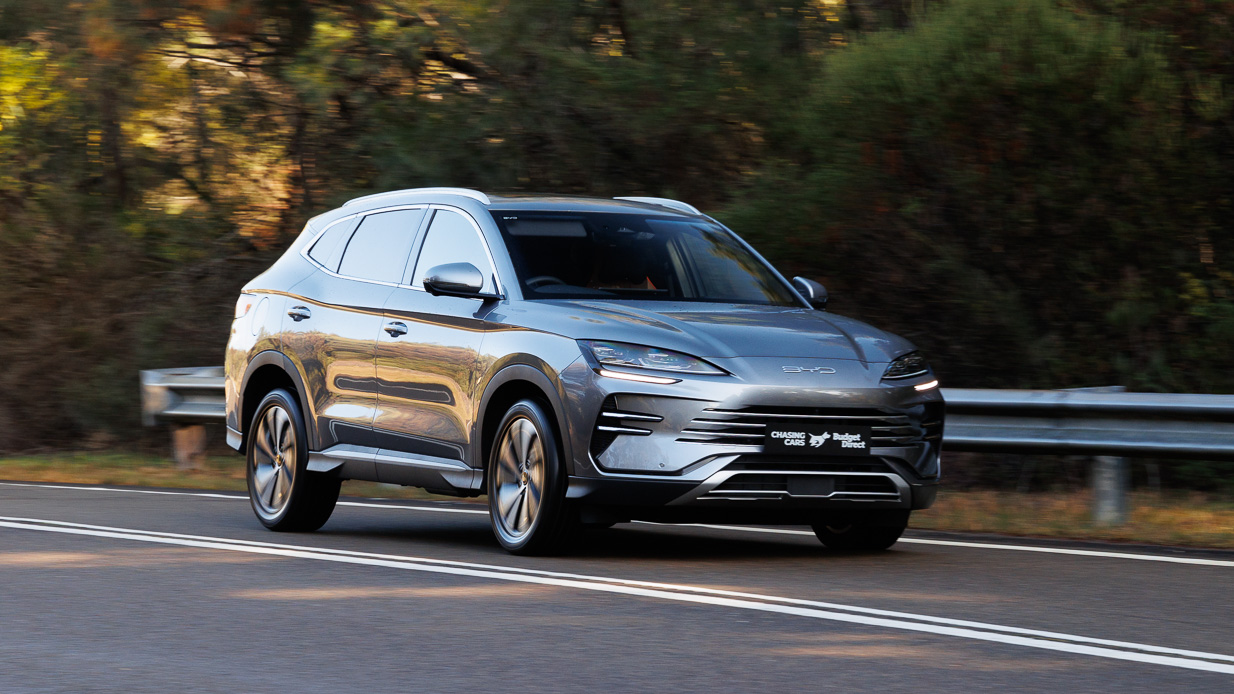
Suitably for nearly all driving situations, BYD solves this problem quite simply: it reserves – at minimum – 25 percent of the battery charge to support the engine, at all times. As a driver, it is not possible to tap into the bottom 25 percent of the battery charge for all-electric use. Instead, it is dedicated to disguising the engine’s lack of power, and it does so effectively.
The Dynamic variant’s single front-mounted electric motor produces a healthier 150kW of power and 300Nm of torque, all of which is available to supplement the petrol’s 72kW/122Nm figures. Total combined outputs are 160kW/300Nm. The upshot is that the Sealion 6 felt peppy and generously-powered across our entire week of testing.
We did charge it for part of our test, and its 80km electric range from 100 percent to 25 percent (when full-EV mode becomes unavailable) sees it use the instant power from the 145kW/300Nm electric motor, which is sufficient for this kind of car. And once you hit 25 percent, the Sealion 6 will use a combination of its 72kW petrol engine and 145kW electric motor as it sees fit.

From our observations, once operating as a hybrid, occupants will faintly hear the petrol engine revving as you accelerate hard off the line, or while overtaking on the highway, but the feeling is very much one of electric propulsion. The engine could occasionally be (distantly) felt whirring away on flat sections, topping up the battery state of charge (to at least 25 percent), while braking will similarly regenerate charge.
Taxing situations like driving up long hills at highway speeds see the BYD tap into its reserve of backup electricity.
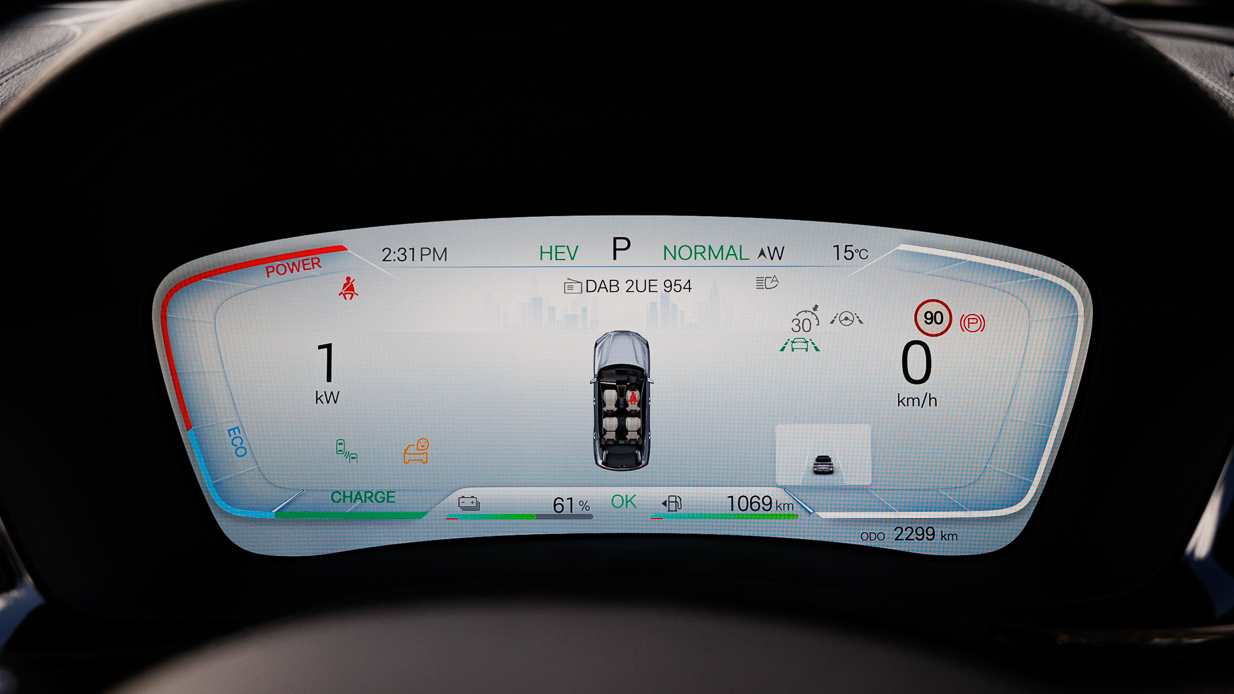
Theoretically, you could run out (driving hard uphill for maybe 30 kilometres), but this didn’t happen to us; we note that we didn’t test the Sealion 6’s towing capability (750kg braked for the Dynamic, 1300kg braked for the Premium AWD).
We’d like to do so: would towing finally expose the engine’s limited outputs if charge diminishes too far? It’d take a real edge case of an uphill stretch to do this, we suppose.
The five-seater Sealion 6’s interior is functional and relatively comfortable, but some subjective choices by BYD mean this SUV simply won’t be configurable to all Australian tastes.
Opt for the cheaper Dynamic model ($48,990 before on-road costs) and you incur a mandatory-take black-and-tan two-tone interior that we quite liked, but understand not all will. The $52,990 Premium AWD adds a similarly polarising grey-blue two-tone choice. What’s missing is a less individualistic colour such as dark grey, mocha or black.
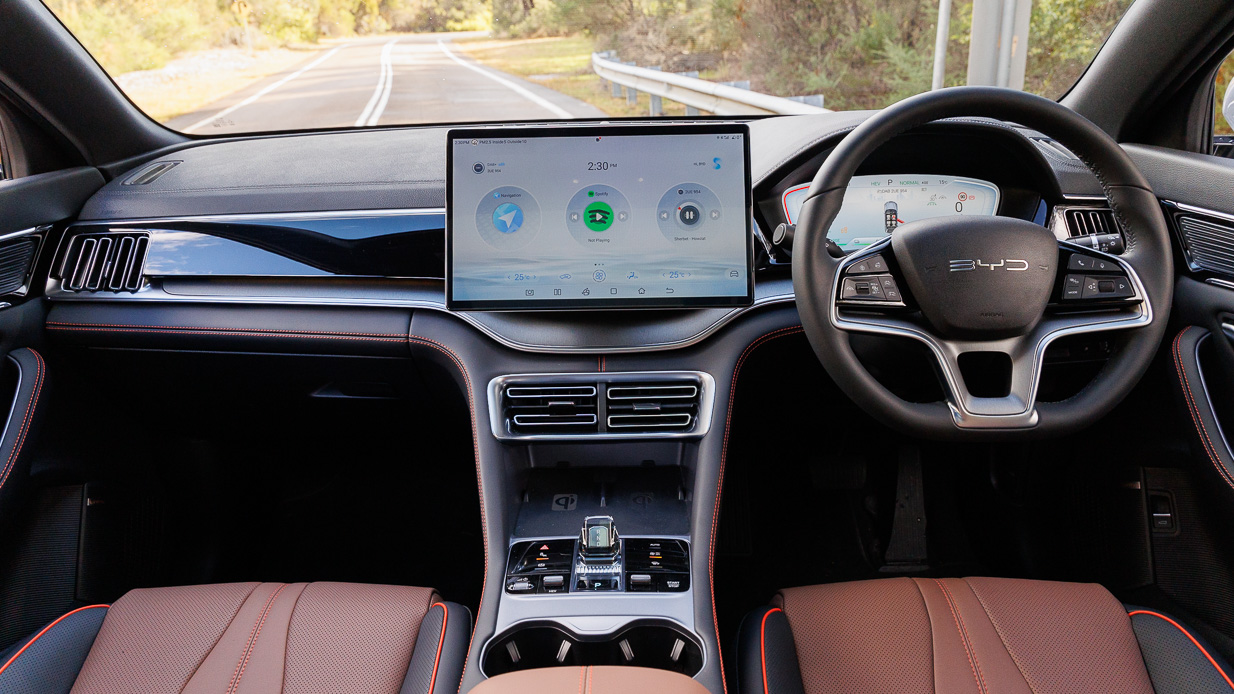
Colours aside, though, and few will find major fault with the Sealion 6’s cabin – particularly at this price. Materially, the BYD presents as what it is: a mainstream midsize SUV with a few semi-premium touches mainly delivered through generous specification like standard-fit heated and cooled front seats, or the size of the (rotating) 15-inch central touchscreen.
A Sealion 6 isn’t a luxury SUV, nor does it need to be. And, again, with price in mind, we can’t obsessively ping the Sealion 6 for lacking a few bits and bobs we’d normally like – such as lumbar adjustment for the front seats (or at least the driver), or more than four ways of adjustment for the passenger seat, though we would certainly welcome the addition of such comforts.
As an aside, in some markets BYD sells upmarket versions of its vehicles under the ‘Denza’ brand – in part, as Lexus is to Toyota – and it will be interesting to see whether that premium line is ever offered in Australia.
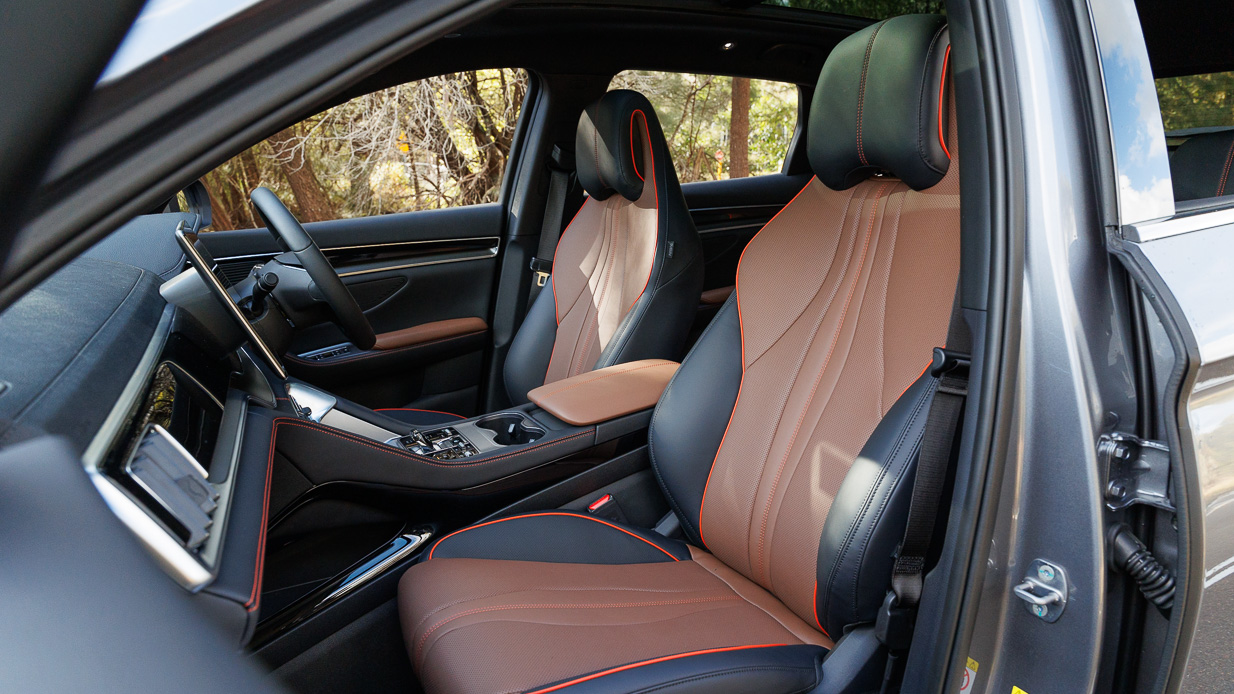
Even without the aforementioned lumbar adjustments, we found the front seats of the Sealion 6 to be pretty comfortable and ergonomically acceptable, with a pleasantly high driving position affording good visibility and allowing all major controls to fall easily to hand.
Unlike the newly-facelifted Tesla Model 3 (and, presumably, a forthcoming update to the Model Y SUV), the BYD Sealion 6 still includes de rigueur cabin items like physical stalks for the side indicators and windscreen wipers.
Climate controls might be accessed via the touchscreen but they are omnipresent at the bottom of the display, albeit with a big catch…
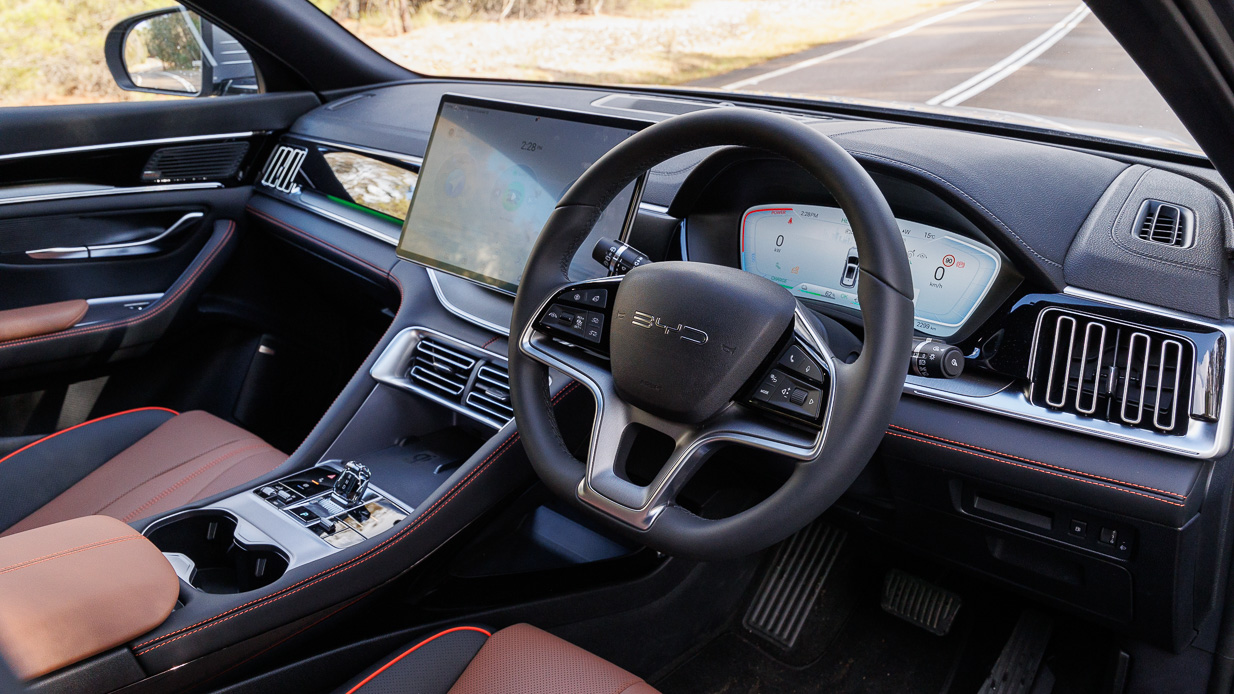
That catch is that if you use the wireless Apple CarPlay connection (as many buyers will), the climate controls do not, in fact, stay visible at the bottom of the screen. In fact, all trace of the underlying BYD software disappears – Apple purists may love this, but we’d still like to retain access to our fan controls, at least until CarPlay adds climate controls as it is expected to in a future update.
Speaking of CarPlay, however, we loved the fact that the Sealion 6 display’s superior resolution and brightness rendered our smartphone mirroring in a big, beautiful way – perhaps the best we’ve used in any car. And the Sealion 6’s standard 10-speaker Infinity stereo sounded decent, too.
In front of the driver is a very partially configurable digital instrument cluster. If there’s any aspect of the Sealion 6 that feels like an aftermarket doo-dad purchased from Wish it’s this, revealing fonts that seem mismatched to the rest of the vehicle interior and amateurish graphics when compared to key rivals. This needs an overhaul.
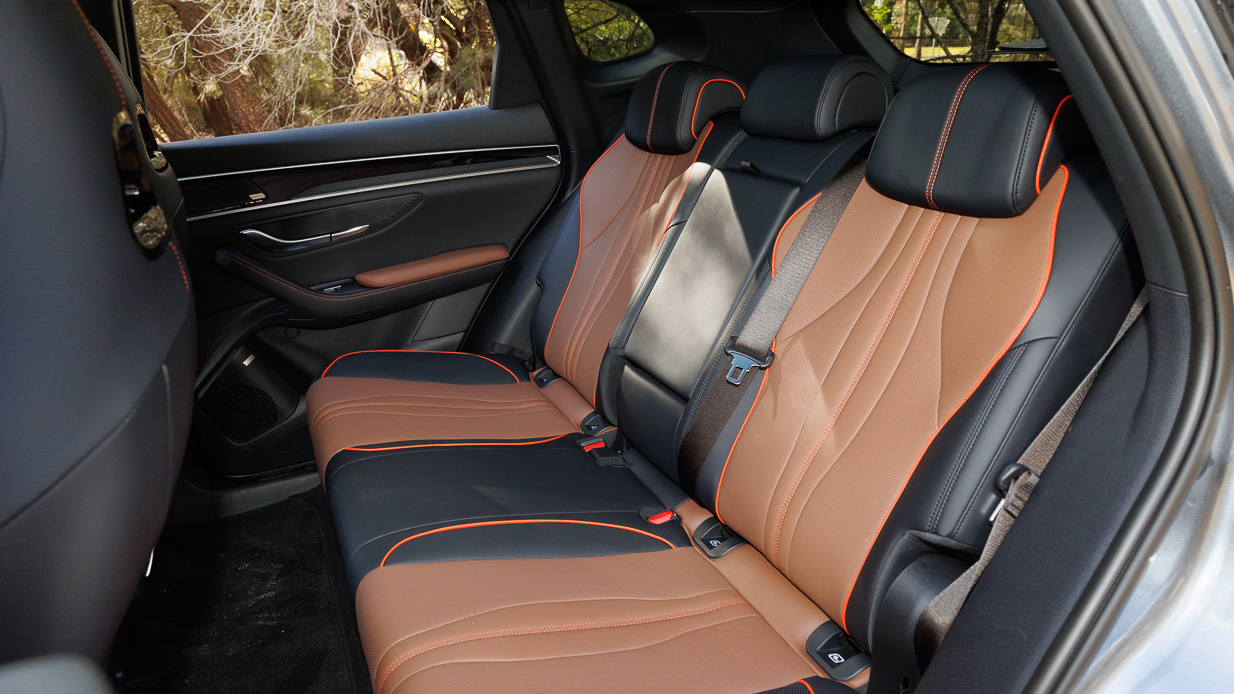
Second-row space was, however, quite decent, with good legroom and headroom for six-footers and easily enough width in the cabin to make the rear centre perch usable.
Rear occupants also benefit from climate vents, a flip-down armrest, and additional USB ports (there are four for the vehicle), while impressively, soft materials are used in the second row as well as the first.
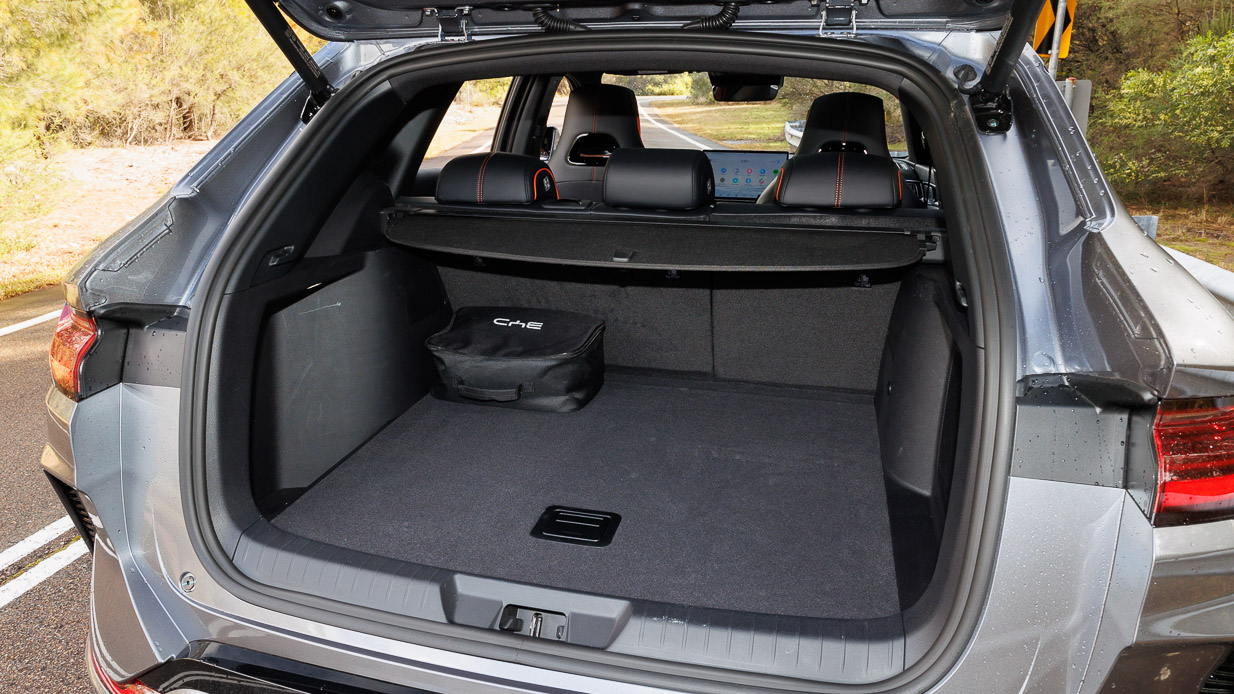
A power tailgate reveals, however, mediocre boot space. Rated at 425 litres behind an erected second row, the Sealion 6 – despite having relatively generous dimensions at 4.78m in length and 1.89m in width – has easily one of the smallest cargo areas in the class, with annoying intrusion from the outer edges of the space. Even folding the rear seats adds up to just 1440 litres.
Unlike the considerably more expensive Mitsubishi Outlander PHEV, no seven-seat configuration of the BYD Sealion 6 is available.
Australia’s new car safety and crash assessment body, ANCAP, has not yet tested the BYD Sealion 6, but we would not be surprised to see ANCAP conduct such a test in future.
Normally, if ANCAP had not done its own test, it would translate the result for the European version of the same vehicle as the equivalent European Union body, Euro NCAP, conducts many more tests.
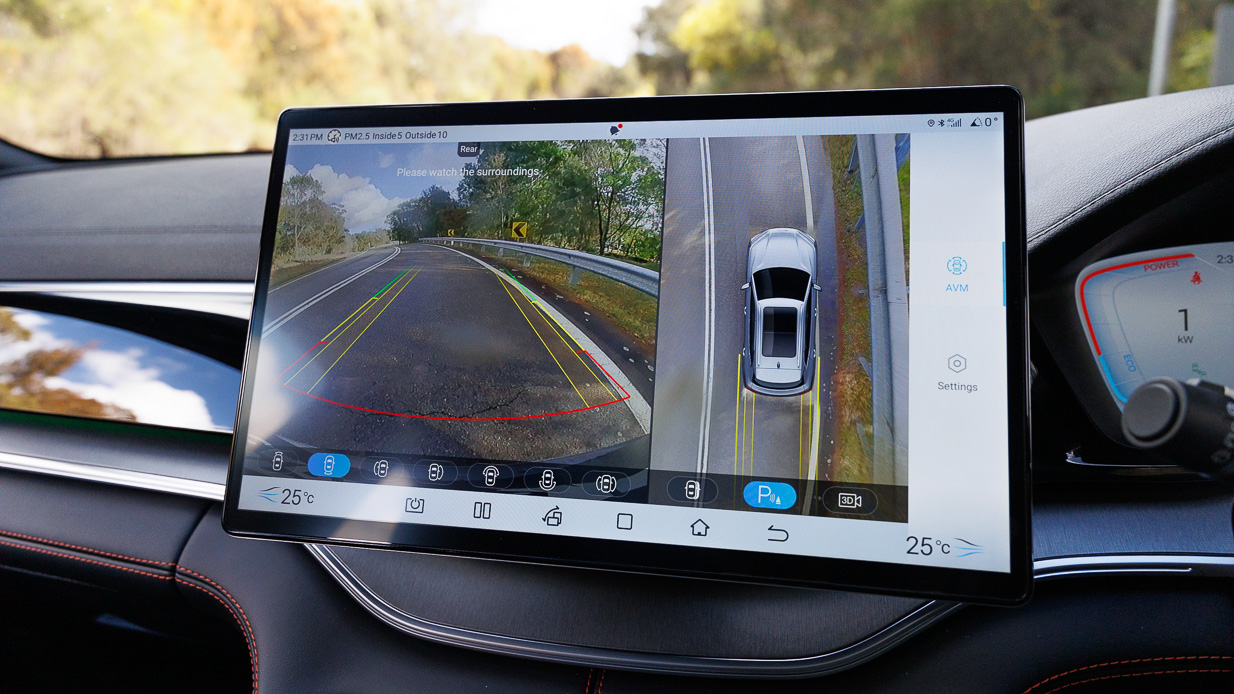
But the plug-in hybrid Sealion 6 is not sold in Europe (at least, not yet). However, a fully-electric version called the BYD Seal-U is and it scored five stars when Euro NCAP tested the EV in 2023.
How well that result would translate to the Sealion 6, which has a combustion engine at the front (which would naturally change crash dynamics), and a smaller battery, is not known.
However, we were able to test some of the Sealion 6’s passive safety systems during our week-long evaluation drive.
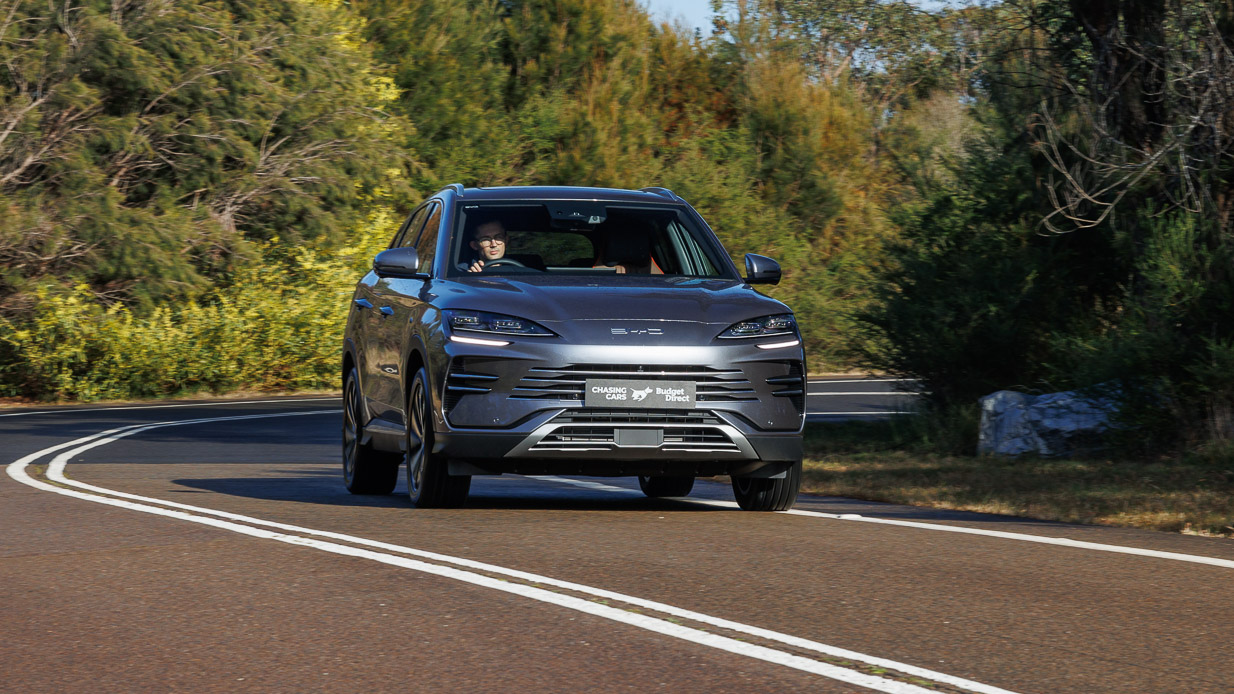
Some of the BYD’s technologies such as the adaptive cruise control, blind spot monitoring, front and rear cross-traffic alert, and the very crisp 360-degree camera, work very well indeed.
Other technologies (as described in the Driving section above) require more polish. These include the overly sensitive lane-keeping system and speed sign monitoring. However, both can be turned off via a relatively convoluted menu system in the central touchscreen.
Typically, low running costs are crucial to justifying the extra expense of a hybrid – particularly a plug-in hybrid, which (normally) is considerably more expensive than a non-hybrid vehicle due to the size and cost of its battery.
However, with the BYD Sealion 6, the purchase price is so competitive compared to even non-hybrid midsize SUVs (let alone its hybrid rivals) that this SUV doesn’t necessarily need to be exceptionally cheap to run to make sense.
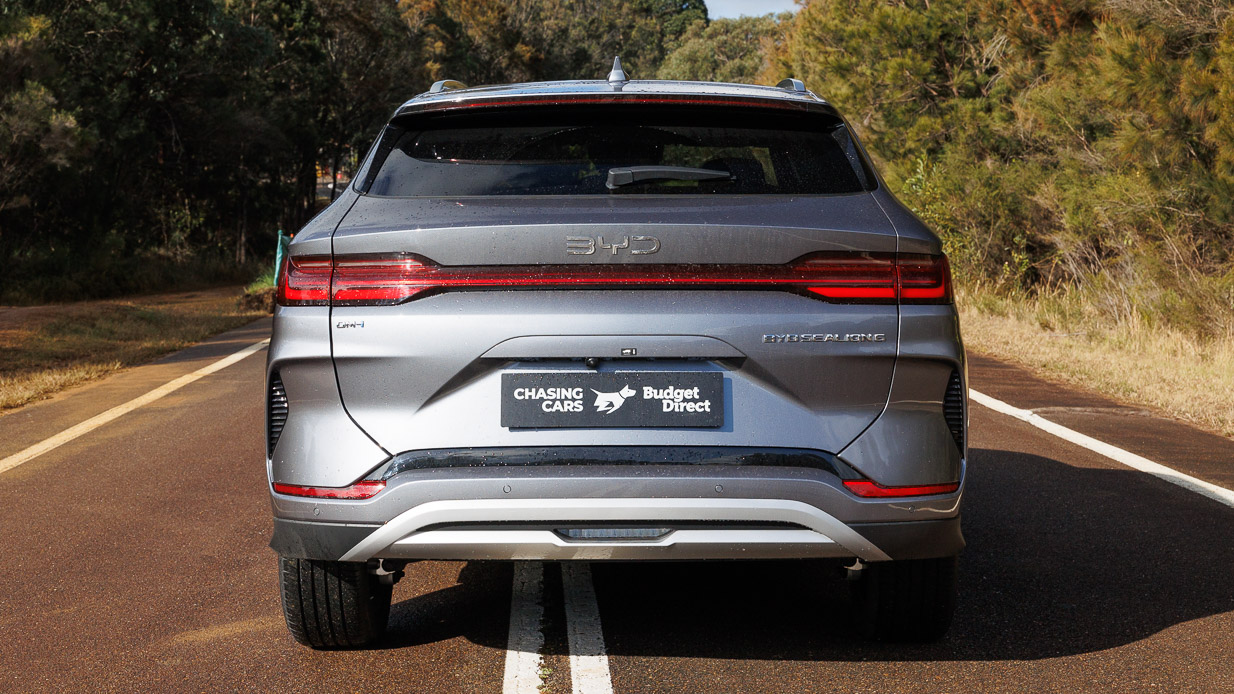
That said, the Sealion 6 was reasonably economical in our real-world testing. In EV-only mode, we recorded electricity consumption of just 17.1kWh/100km in mixed driving without ever using the petrol engine.
As described in the Driving section above, the Sealion 6’s software deactivates EV-only mode when the SUV’s battery reaches 25 percent state of charge, meaning that from of the Sealion 6’s 18.3kWh usable battery size, only 13.7kWh is ‘truly’ accessible. This still makes for a respectable EV range of 80km.
Given this large battery buffer, fuel consumption once the EV-only mode is deactivated and the engine can be called upon without driver intervention was impressively frugal. We recorded 4.1L/100km in mixed driving, meaning that thanks to the 60-litre fuel tank, the Sealion 6 has a driving range of 1463km even if you don’t charge it (or 1543km if you do).
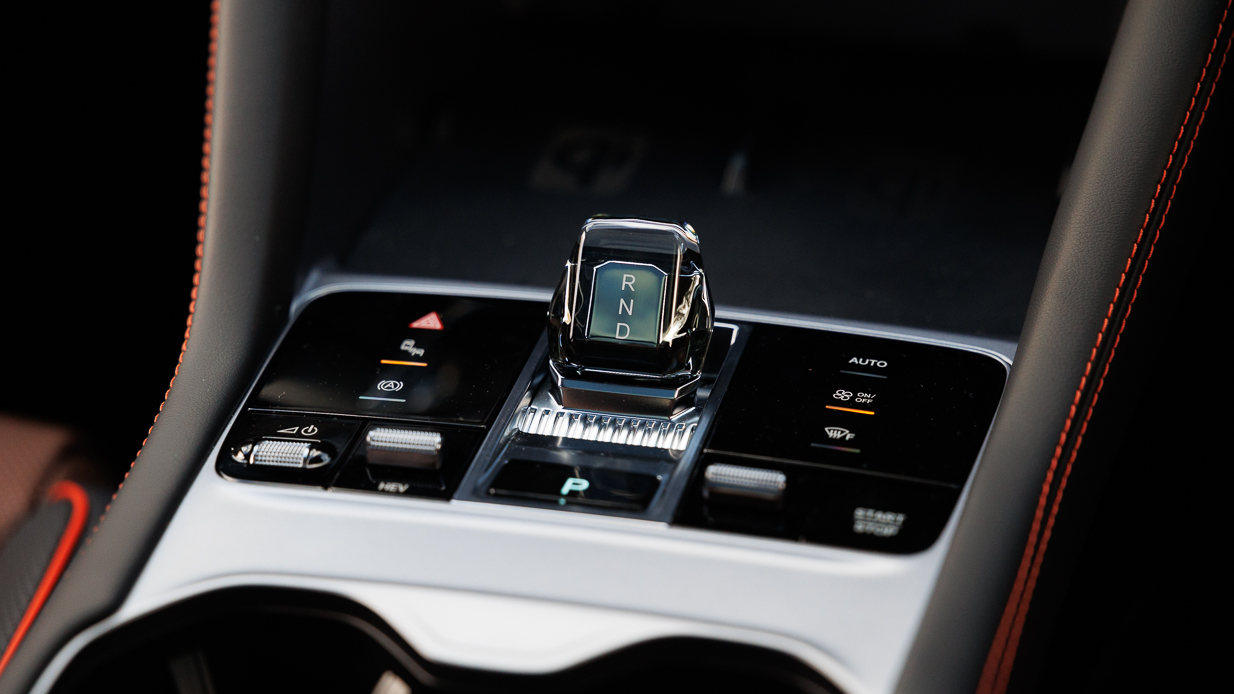
The cost to fully fuel and charge the Sealion 6 is about $140 a pop: $132 to fill the 60-litre fuel tank with the required minimum 95-octane petrol, and circa-$8.00 to charge the 18.3kWh (usable) LFP blade battery.
That makes for attractively inexpensive running from a fuel perspective – about $9 per 100km travelled for the BYD Sealion 6 with front-wheel drive, compared to around $12 per 100km for a Toyota RAV4 hybrid delivering 5.5L/100km.
A Tesla Model Y rear-wheel drive, consuming 17kWh/100km, is cheaper to drive if charged at home ($6 per 100km), but more expensive if relying on public charging ($12 per 100km on average).

Turning to scheduled maintenance, the Sealion 6 requires servicing every 12 months or 20,000km. Over five years, costs are reasonable at $1543 for the front-wheel-drive model, with the AWD Premium costing only about $100 more in total.
The warranty is where the Sealion 6 has a marginal drawback. The vehicle warranty covers six years/150,000km, which is slightly less than some competitors, while the high-voltage warranty is a more typical eight years/160,000km.
At its current pricing, the BYD Sealion 6 is a genuinely impressive vehicle and a midsize SUV that deserves to be on your test-drive list if you are an Australian shopping in this segment.
Some other hybrid SUVs are a little bit more polished to drive and come from manufacturers with more established reputations. That said, we don’t have a crystal ball about BYD reliability and durability, of course.
From a value-for-money perspective, the Sealion 6 leaves virtually every rival SUV distantly in its wake. With its near-premium grade interior, good ride quality, acceptable handling and impressively well-sorted hybrid system that offers not only 80km of realistic electric range, but also superb fuel efficiency in any context, the BYD achieves highly.

In comparison, vehicles such as the Honda CR-V hybrid and, especially, the Mitsubishi Outlander plug-in hybrid, suddenly look overpriced. And buyers interested in some level of electrification (but not necessarily insisting on a full EV) might even think twice about a Tesla Model Y, despite that vehicle’s repeated price cuts.
In other words, BYD isn’t playing around. If we were a product planner at an established marque we’d be worried. But if we were a buyer, we’d be rejoicing for the effects this audacious new competitor should bring to the market.
Key specs (as tested)
About Chasing cars
Chasing Cars reviews are 100% independent.
Because we are powered by Budget Direct Insurance, we don’t receive advertising or sales revenue from car manufacturers.
We’re truly independent – giving you Australia’s best car reviews.
The estimate provided does not take into account your personal circumstances but is intended to give a general indication of the cost of insurance, in order to obtain a complete quote, please visit www.budgetdirect.com.au. Estimate includes 15%^ online discount.
^Conditions Apply
Budget Direct Insurance arranged by Auto & General Services Pty Ltd ACN 003 617 909(AGS) AFSL 241 411, for and on behalf of the insurer, Auto & General Insurance Company Limited(ABN 42 111 586 353, AFSL 285 571).Because we don’t know your financial needs, we can’t advise you if this insurance will suit you. You should consider your needs and the Product Disclosure Statement before making a decision to buy insurance. Terms and conditions apply.
Indicative quote based on assumptions including postcode , 40 year old male with no offences, licence suspensions or claims in the last 5 years, a NCD Rating 1 and no younger drivers listed. White car, driven up to 10,000kms a year, unfinanced, with no modifications, factory options and/or non-standard accessories, private use only and garaged at night.
^Online Discounts Terms & Conditions
1. Discounts apply to the premium paid for a new Budget Direct Gold Comprehensive Car Insurance, Third Party Property Only or Third Party Property, Fire & Theft Insurance policy initiated online on or after 29 March 2017. Discounts do not apply to optional Roadside Assistance.
2. Discounts do not apply to any renewal offer of insurance.
3. Discounts only apply to the insurance portion of the premium. Discounts are applied before government charges, taxes, levies and fees, including instalment processing fees (as applicable). The full extent of discounts may therefore be impacted.
4. We reserve the right to change the offer without notice.